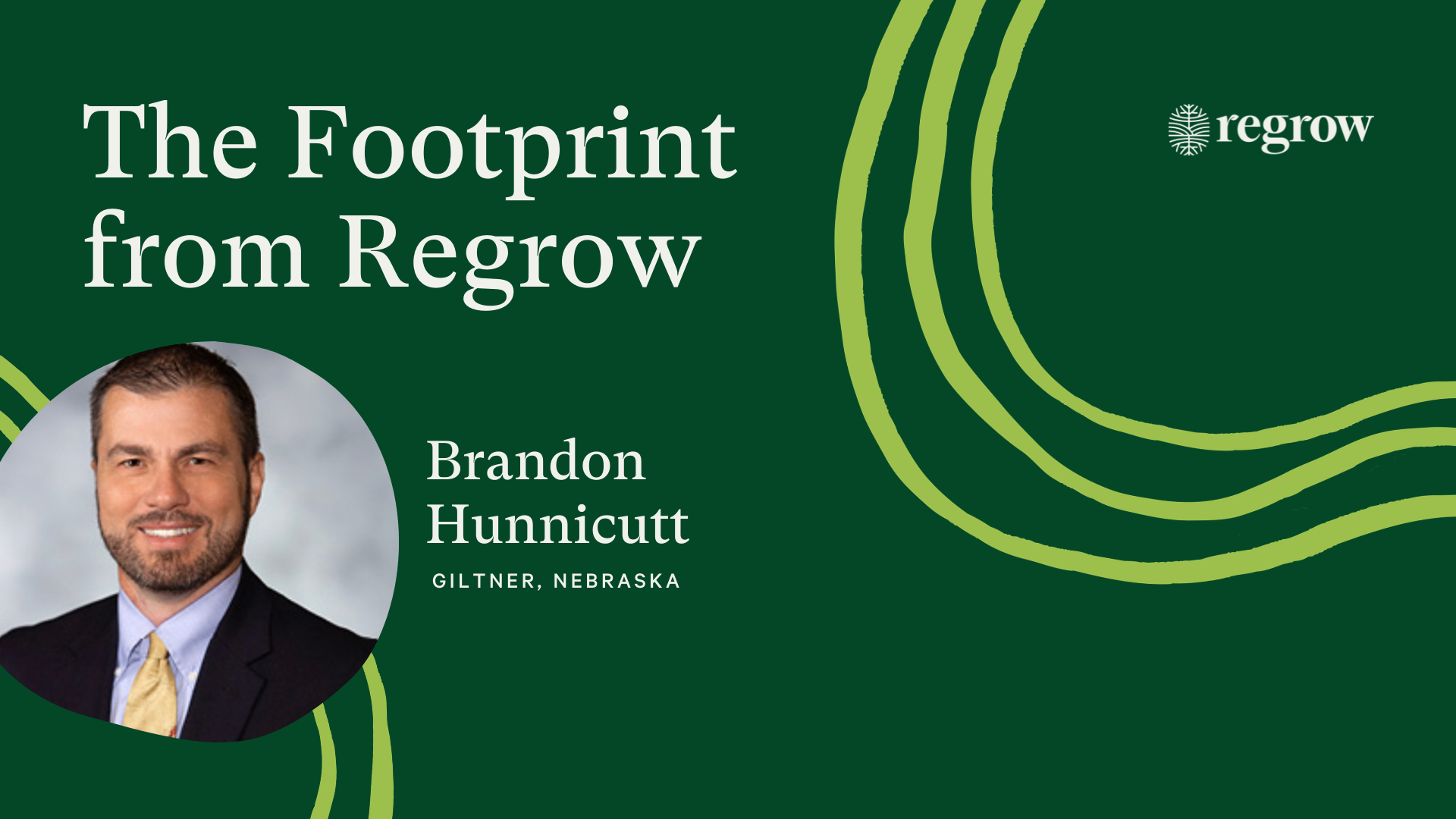It is extremely exciting to hear all the enthusiasm about the potential new market opportunities for farmers and the agricultural industry as a whole, including the latest hot topic focused on carbon. However, given this is such a developing space there is a lot of confusion around the different private and public programs that are appearing almost every week. At Regrow, we are privileged to work with some of the most innovative companies across the supply chain and have been building tools to simplify the adoption of climate-smart agricultural practices.
I had a chance to sit down, virtually of course, with Nebraska farmer Brandon Hunnicutt, to talk about the practical realities and the forces that farmers see when making decisions around farming practices and new market participation. Brandon raises corn, soybeans, and popcorn. He also has part of the operation dedicated to organic production. Brandon shared that over the years he has started to introduce cover crops as well. I was able to ask Brandon a few questions to dig deeper into the nuances that we need to be aware of as an industry to help farmers get rewarded for positive ecosystem outcomes, which, over the next couple weeks I will share with you pieces of our conversation in our new blog series called The Footprint. Now let's hear from Brandon.
Anastasia: Brandon, you’re the chair of Field to Market, an organization dedicated to the entire value chain working together to meet growing demand for food, fiber and fuel in sustainable and responsible ways, please talk about the use of the Fieldprint calculator on your property?
Brandon: We have used it, but early on there were challenges when it came to irrigation usage. Trying to compare a score was challenging. Comparing an irrigated area to a non-irrigated area was difficult especially since water, whether rainfall or irrigation, is one of the key inputs in crop production. On another note, I am also a part of the National Corn Growers board, which is another organization that is supportive of the Fieldprint calculator.
Anastasia: I have been hearing from farmers that there are data entry challenges given how some of the systems and tools require a lot of data to function, what are your thoughts about this?
Brandon: Data entry requirements are one of the biggest barriers to adoption. Even from our operations standpoint, we are running multiple data platforms, entering data, and ensuring the data is entered in the right place can take a lot of time, especially when having to manually input and input that same data into other reports we have for entities like our Natural Resource District…However, there are a number of Qualified Data Management Partners involved with the FieldPrint Calculator, but not everyone, including ourselves, are on those specific platforms. We definitely need more QDMPs to help with the process. However, it is easy to see what changes you can make to get environmental benefits, but data entry timesaving benefits are not one of them currently. But with some of the data I do have entered and processed I can get a quick look at changes potentially needed to be made on the farm.
There are a number of producers that I know who participate in industry programs where the Fieldprint calculator is required by the Consumer Product Goods companies they are raising the crops for. On the other hand, I also hear stories from producers who, for example, have mixed cropping and cattle and/or poultry operations, and they are questioning how to use the Fieldprint score directly, given that there are utilizing their crops to feed their animals and these practices are not recognized beyond the farm gate as sustainable efforts.“
Anastasia: Provide more insight about precondition of environmental outcomes and sustainability practices. There is a lot of talk about carbon markets, as well as practices that can lead to additional carbon sequestration in the soil, such as no-till and planting cover crops as examples. What are your thoughts on these opportunities and how do they relate to farming realities?
“The adoption of these practices is multifaceted, given that it is connected to other obligations that a farmer might have to suppliers or buyers. "
If you are in the seed production business, the company you have a contract with might want you to follow specific practices, such as tillage twice a year, as well as no cover crops in the winter. This means that if the seed production company’s requirements do not change, those acres will be excluded from carbon markets. It seems counterintuitive but it is reality. The seed production acres are almost as tillage heavy as organic acres, which is not something that the consumer wants. Those are the challenges that wait to be solved.
In another situation, growers might have landlords who do not want them to plant cover crops and want to see “black dirt” in the conventionally tilled. There are many factors that need to be taken into consideration when considering some of these market opportunities.
Even different elevators, same company, located in a close vicinity, might support a different set of practices that they encourage growers to follow. To give you an example, on our operation the seed company we work with encourages and pays for cover crops at $20/acre, but discourages no-till.”
Read part two of Brandon's interview here.



